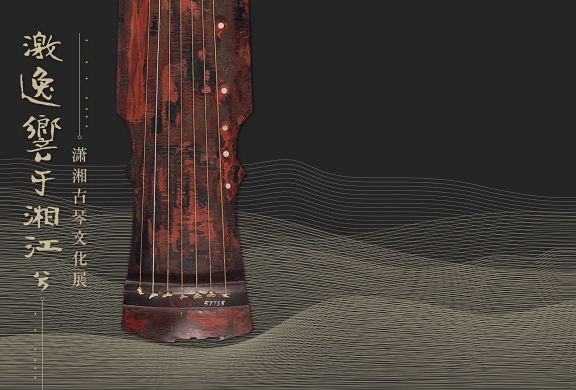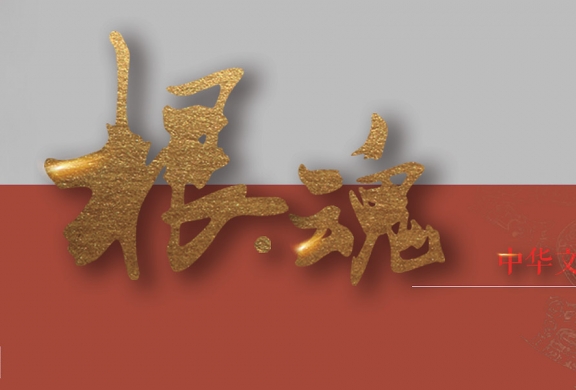Past Exhibitions
Exhibition of Guqin Culture in HunanThemed Exhibition Hall, 3F 2019.05.18 - 2022.09.30 Guqin originally known as qin, also called a seven-stringed plucked qin and yaoqin, is one of the most ancient instruments of Chinese nation. In ancient times, it was highly praised by literati as the first of the four arts of qin, chess, calligraphy and painting. In November 2003, UNESCO declared it the "representative of oral and intangible heritage of humanity". Hunan is blessed with a long history of guqin. Shun, a chief of ancient Chinese tribal alliance, played the guqin, intoning “Nanfeng” to rein the country. Guo Mian, a musician in the Southern Song Dynasty, once moved to Hengshan Mountain and composed a song named “Mist and Clouds over Xiao-Xiang River”, which was admired by people for thousands of years. Sages as Zhu Xi, Zhang Shi, Wang Fuzhi and Zuo Zongtang spread feudal code of ethics and purified their souls by qin, adding profound cultural connotation to guqin culture in Hunna. Modern musicians, such as Peng Zhiqing, Yang Zongji, Gu Meigeng, Zha Fuxi and Li Jing were all engaged in guqin study in Hunan, which had a great impact in this field. Hunan Museum has a collection of fifty-three pieces of guqin, which were unearthed or manufactured during the time from Western Han Dynasty to Republic of China, spanning more than two thousand years. These rich heritages are undoubtedly an important part of Chinese guqin culture. “Those who play the guqin by the Xiangjiang River have good moral standards as ancient sages.” In the moonlight of Lushan Mountain and the ripple of Xiangjiang river, guqin melody is in harmony with the heaven and the earth, echoing with the universe. It is hoped that the exhibition can provide an opportunity for people from all walks of life to understand the culture of Xiaoxiang guqin and appreciate its unique charm. |
Root and Soul - Exhibition of Chinese CivilizationNo.1Special Exhibition Hall, 1F 2019.05.18 - 2019.07.18 Chinese civilization, profound and long-lasting, has been recognized by people all over the world. This fact is even further solidified by the boundless artifacts uncovered. Although only 30 sets of exhibits are shown in this exhibition and its selection process was constrained by many obstacles, we still have a chance to catch a glimpse of this magnificent Chinese civilization. The development of Chinese civilization has been multi-dimensional and full of twists and turns, rather than going down a narrow path. the artifacts will be restored to its former glory as we will attempt to place it back in its own timeline. We will also seek out the artifacts’ values and positions within the society by conducting an extensive study into their origin, design and background, thus shining a light on the beauty of the civilization. The Chinese civilization is the only civilization that is still alive and going strong. Although it lies on the Eastern pole of the Eurasian continent, blocked by an immense ocean, high mountains and an endless desert, China has never closed its door to other civilizations. There were exchanges and integrations between grassland culture and farming culture in its north and south; communication and interactions with cultures from ancient Egypt, Greece, Rome, Persia and Arab in the East and the West. In addition, There had also been an influx of colorful religions, such as Buddhism, Zoroastrianism, Nestorianism and Islam. some of foreign cultures have either faded away or assimilated into Chinese civilization. Through constant communication, trade and interaction, civilizations collide, innovate and renew. The exhibits here are witnesses of the cultural exchanges between China and the west. History and reality are inseparable, even more so with civilizations that develops from a natural, primitive state. These artifacts may seem to have no connection with the current China. Actually, it is inextricably tied up with our modern life. It affects our way of thinking and many other aspects. It is in our blood. It is the “root” and “soul” of our culture. “Even now, it is the powerful spiritual strength that promotes reform, opening-up and the socialist modernization movement”.
|
Exhibition of Artwork Donations from Yan Jialong and Zou Chuan’anNo.2 Special Exhibition Hall,1F 2019.05.10 - 2019.05.30 The exhibition features 43 works of Yan and 63 of Zou, all of which marked the peak of their personal achievements, fully revealing the level of Hunan contemporary art between the latter part of the 20th century and the early 21st century. |
Exhibition of Hunan Private CollectionsNo.2 Special Exhibition Hall, 1F 2019.01.20 - 2019.02.28 Private collections of Hunan Province have been flourishing for a long time. In response to the policy of the Sate Council, we organized this exhibition, aiming to encourage the legal private collection, inject vitality into collection market and reveal the irreplaceable role of society in facilitating the protection of cultural relics. |
The Paintings of Wu GuanzhongNo.2 Special Exhibition Hall, 1F 2018.10.17 - 2019.01.10 Wu Guanzhong(1919-2010), born in Yixing of Jiangsu province, is a renown painter and art educator. His practical and theoretical achievements have brought a broader prospective for the Chinese contemporary art. During 1980s, Wu probed into a series of significant aesthetic problems such as “abstract beauty”, “form beauty” and “form determining the content”, leaving abundant works and many sharply novel remarks. Artistic ideas proposed by him like “unbroken kite string” (kite refers to art works while string the reality where inspirations lie. He argued that works, despite of its forms, ought to emotionally revolve around certain themes), “cultural war” (cultural is also involved in global competition) and “form is nothing” (form should be appreciated in content, otherwise, it is of no meaning. His ideas have caught widespread attention, aroused discussion and controversy in artistic field, stimulating relentless passion in contemporary artists. Devoted wholeheartedly to blending together western oil paintings and traditional Chinese ink paintings, Wu created a lot of works, which, with original and ingenious designs, are perfect combination of tradition and modernity, imbued with his philosophy of life and enthusiasm for art. What's more, he donated for many times his works to National Art Museum Of China, Shanghai Art Museum, Zhejiang Art Museum, The National Gallery Singapore and Art Museum of Hong Kong etc, making his works accessible to more people. |
Pharaohs, Gods and Mummies:Ancient Egyptian Finds ExhibitionNo.1 Special Exhibition Hall, 1F 2018.09.28 - 2018.12.05 The body of a woman bent with her arms on the ground, her head marking the western border of the sky, while her arms limit the eastern one. This is how ancient Egyptians represented the sky, with the arched goddess Nut, who cyclically gives birth to the sun every morning. This is the starting moment of the journey in Egypt. On both sides of the Nile, the mother river of Egypt, plants grew in the fertile soil. The peasants supported the economic lifeline of the whole country through their hard work while senior officials lived a luxurious and dissipated life under the shade of garden trees. The quietly standing pyramids convey Pharaohs’ hope for immortality, and the stone pillars of temples contain the millenary history of this ancient country. The solar calendar tells extraordinary wisdom and the hieroglyphic has left behind the legend of ages. …… From desolation to prosperity, from ignorance to civilization, from simple lines to complex patterns, from frugal grave mounds to lofty palaces, all this contributed to the great civilization of Ancient Egypt. Hunan Museum, together with Henan Museum, Shanxi Museum, Liaoning Museum and Guangdong Museum, cooperating with the Museo Egizio, Turin, who holds the second largest ancient Egyptian collection, organized this ancient Egypt finds exhibition. More than 230 precious Egyptian artifacts from Nile river region with deep and profound history and culture, started from the northern ancient city of Italy, Turin, traveled to the east through the new Silk Road, and now display the mysterious and fascinating life, belief and rituals. |








